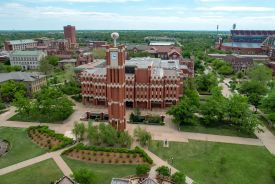Chilean Earthquake of 2010 Caused Several Small 'Icequakes' in Antarctica, New Study Reveals
ByThe massive and deadly earthquake of 2010 in Chile caused "icequakes" in Antarctica, thousands of miles south, across the Southern Ocean.
According to ABC News, researchers published a study on the subject in the journal Nature Geoscience. The earthquake had an 8.8-magnitude and hit Maule in Feb. 2010 and killed more than 700 people.
The quake lasted nearly three minutes and was the sixth largest ever recorded by a seismograph.
"We interpret these events as small icequakes, most of which were triggered during or immediately after the passing of long-period Rayleigh waves generated from the Chilean mainshock," study lead author Zhigang Peng, an associate professor in the School of Earth and Atmospheric Sciences, said in a press release. "This is somewhat different from the micro-earthquakes and tremor caused by both Love and Rayleigh-type surface waves that traditionally occur in other tectonically active regions thousands of miles from large earthquakes."
The new study is the first time researchers recorded data on a large earthquake's after effects at a distant location. The study authors analyzed seismic data taken in Antarctica at dozens of different stations, revealing several small quakes in the ice hours after the Chilean earthquake.
"Such differences may be subtle, but they tell us that the mechanisms of these triggered icequakes and small earthquakes are different," Peng said. "One is more like cracking, while the other is like a shear slip event. It's similar to two hands passing each other."
Study co-author Jake Walter, a researcher at the University of Texas, said the icequakes may be the result of an ever-widening crevasse.
"A crevasse has its own orientation, so earthquakes coming from different directions and at different strengths may affect a crevasse differently," Walter told ABC News. "For example if it doesn't come at the right angle it may not trigger an icequake.
"This is the first event that we've looked at, and we have plans to look at other events to see what other kinds of behaviours we can find."
© 2025 University Herald, All rights reserved. Do not reproduce without permission.








